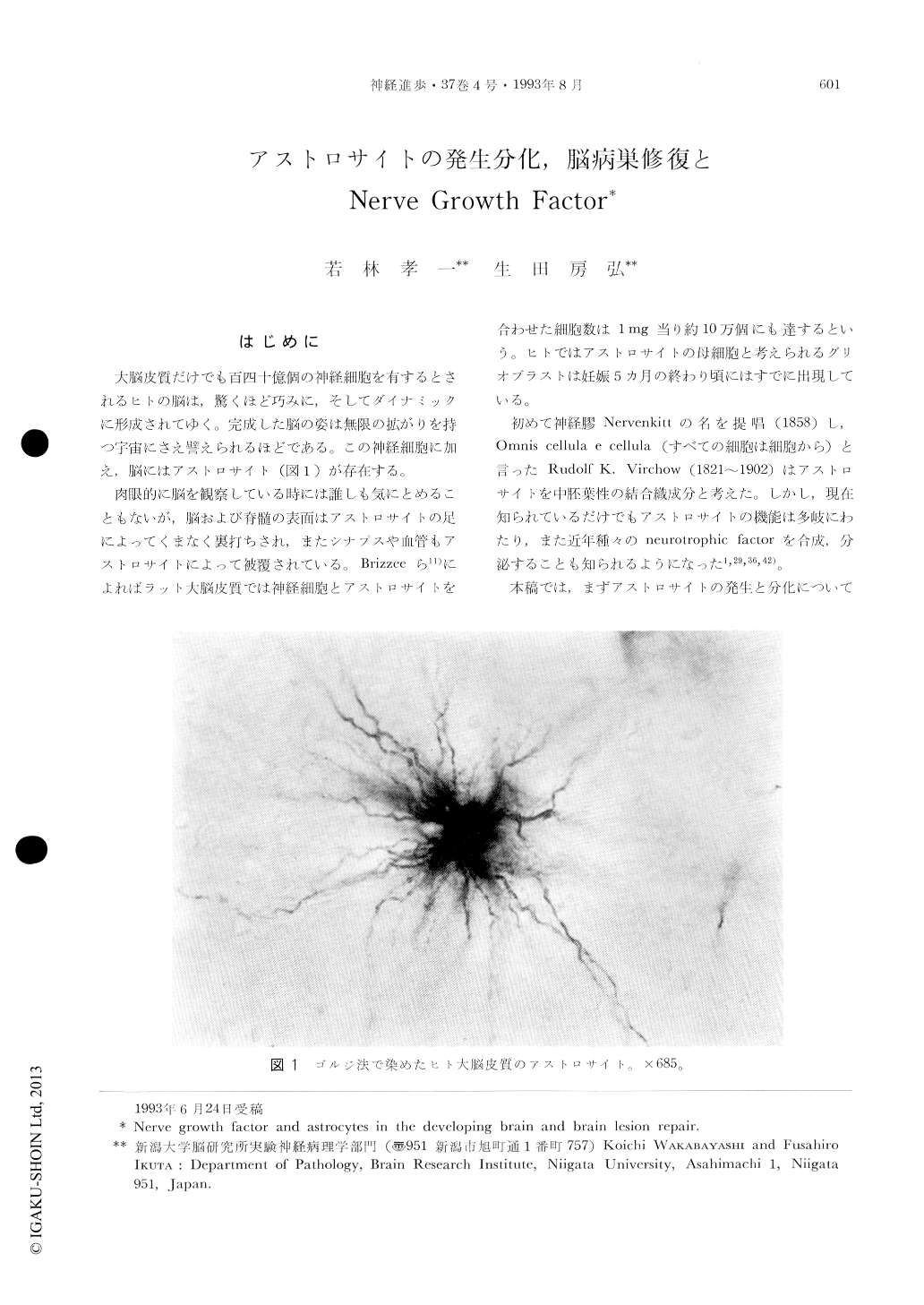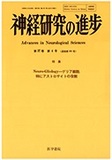Japanese
English
- 有料閲覧
- Abstract 文献概要
- 1ページ目 Look Inside
はじめに
大脳皮質だけでも百四十億個の神経細胞を有するとされるヒトの脳は,驚くほど巧みに,そしてダイナミックに形成されてゆく。完成した脳の姿は無限の拡がりを持つ宇宙にさえ譬えられるほどである。この神経細胞に加え,脳にはアストロサイト(図1)が存在する。
肉眼的に脳を観察している時には誰しも気にとめることもないが,脳および脊髄の表面はアストロサイトの足によってくまなく裏打ちされ,またシナプスや血管もアストロサイトによって被覆されている。Brizzeeら11)によればラット大脳皮質では神経細胞とアストロサイトを合わせた細胞数は1mg当り約10万個にも達するという。ヒトではアストロサイトの母細胞と考えられるグリオブラストは妊娠5カ月の終わり頃にはすでに出現している。
To clarify the functional aspects of the astrocytes in the developing and mature brains, a cryogenic lesion was induced in the cerebral cortex of fetal rat at embryonic day 18 (E18), neonatal rat at postnatal day 2 (P2), P5, P7, P15, P21 and adult rat. The lesions were examined histologically and immunohistochemically using a antibody against glial fibrillary acidic protein (GFAP). In the adult rat brains, reactive astrocytosis and mesenchymal reaction were found in the wounds. On the other hand, mature response characterized by the reactive astrocytosis and the deposition of mesenchymal cells did not occur in wounds before P7. Gliosis was attained over P15.
To further clarify the functional activity of astrocytes, we examined the change in the amount of nerve growth factor (NGF) with time, since it has recently been shown that NGF can be produced by reactive astrocytes in vitro. We measured the amount of NGF in the developing rat brain and the selected area including the lesion. The content of NGF in the cerebral neocortex increased rapidly after P7, reached a peak by P18. However, the level of NGF in the area including the lesion from E18 was lower than that of controls. In the adult rat brains, the amount of NGF was not significantly elevated until 4 or 5 days after cold injury. Thereafter, the amount increased, reaching a peak at about the 10th day, and then decreased to a near-normal value within 2 weeks.

Copyright © 1993, Igaku-Shoin Ltd. All rights reserved.


